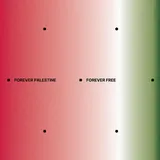
Conversations, connections and community.
Some thoughts from Mucho Melbourne Partner Dominic Hofstede on presenting and participating in The Design Conference 2024. In a profession where client presentations are as close to theatre as most designers get, the conference stage presents a unique opportunity to experience the buzz of an audience.
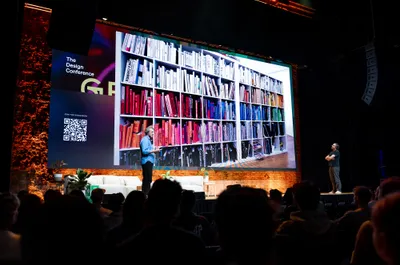
In a profession where client presentations are as close to theatre as most designers get, the conference stage presents a unique opportunity to experience the buzz of an audience. Beyond this emotional high, such events also facilitate new personal connections through conversations and discourse. Recently, Rob Duncan (Mucho SF) and I were invited to participate in The Design Conference in Brisbane; these are my reflections.
Under the enthusiastic guidance of founder Matt Haynes, TDC has evolved over a decade to become one of the leading global design events. TDC 2024 featured a carefully curated roster of local and international speakers including Corine Roesner (Roes Coach), Rogan Jansen (DashDigital Studio), Arielle & Claudia (For the People), Anzac Tasker (Guardians), Guillermo Flores (Orbeh Studio), Patrick Guerrera (Re Agency), Mat Bogust (Think Packaging), Mat Voyce, Julie Solvstrom, Casey Martin (Play), Olivia King, Christina & Anita (R/GA), Nu Goteh (Deem Journal), Yen Trinh (Pipit), Emmi Salonen (Studio Emmi), Carmen & Guido (Niceshit), Hadzidy & Ana (By Fiction), Richie Meldrum (Bare Brand Strat), Tarra van Amerongen (Atlassian Design), Kelvin Soh (DDMMYY) and Paul & Kiel (Pennybridge).

Representing Mucho as a duo required numerous run-throughs and careful planning. A fine line exists between over-preparing and scripting such ‘routines’, and we consciously left space for impromptu moments. Our presentation was deliberately light-hearted but with a professional tone – we felt this approach was true to Mucho’s values.
The talk was framed around Douglas Adams and John Lloyd’s 1983 book ‘The Meaning of Liff’. Their premise used place names from maps and signposts to describe common human experiences for which no words exist. An ‘Aldclune’, for example, is a name the book gave to ‘a collector of ten-year-old telephone directories’, and ‘Dalrymples’ are ‘the things you pay extra for on pieces of handmade craftwork – the rough edges, the paint smudges and the holes in the glazing’. A selection of these words became analogies for our experiences working on projects including Recollection, Big C Charters, UC Investments, Visa, Art Gallery NSW and Piedmont Art Walk.
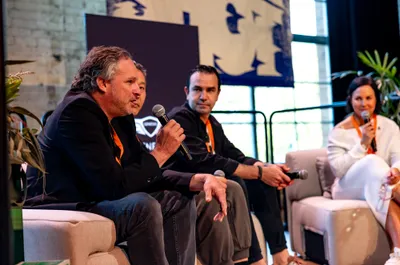


Unlike other conferences, TDC limits presentations to an ideal 30 minute duration. Though this guidance is typically ignored by most speakers, the half hour limit results in concise and focused talks, followed by Q&A reflections to unpack key topics. Observing the lively interactions taking place across the four days of the conference, it became apparent the important role such events now play in creating a sense of belonging and community. Freed from the enforced isolation of the pandemic, but with many continuing to work from home, meeting colleagues in person is a reminder of the value of face-to-face interaction. At conferences like TDC, that interchange often happens in the moments between sessions; the stimulus of a presentation is enough to ignite a conversation, and it is not always about design.
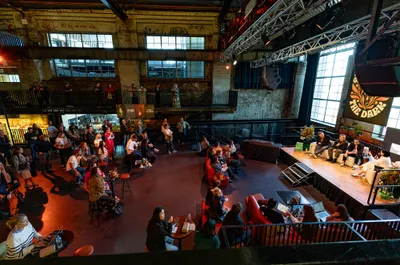
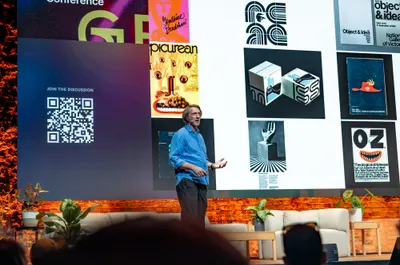
Design Associations were once the facilitators of this exchange, but, in Australia at least, they have struggled to maintain relevance and purpose given the disruption of the digital age. It seems that conferences are filling this void with a one-stop-shop of creative stimuli in the form of presentations, workshops and podcasts.
Interestingly, the most common topic discussed, beyond the predictable anxieties around AI, was mental health. It’s clear that conferences like TDC have become platforms for creatives to share their experiences, both positive and negative. Beyond this trend towards emotional openness, a more significant shift is fostering a culture of support and solutions. Noteworthy examples, such as London-based Finnish designer Emmi Salonen’s thoughtful presentation on her Creative Ecosystem model, underscored the importance of proactive approaches to sustaining creative wellbeing. Combining personal reflection, high-quality work and useful strategies, Salonen encapsulated why in-person design conferences matter, now more than ever.
Images/video by @kalcinema.au

